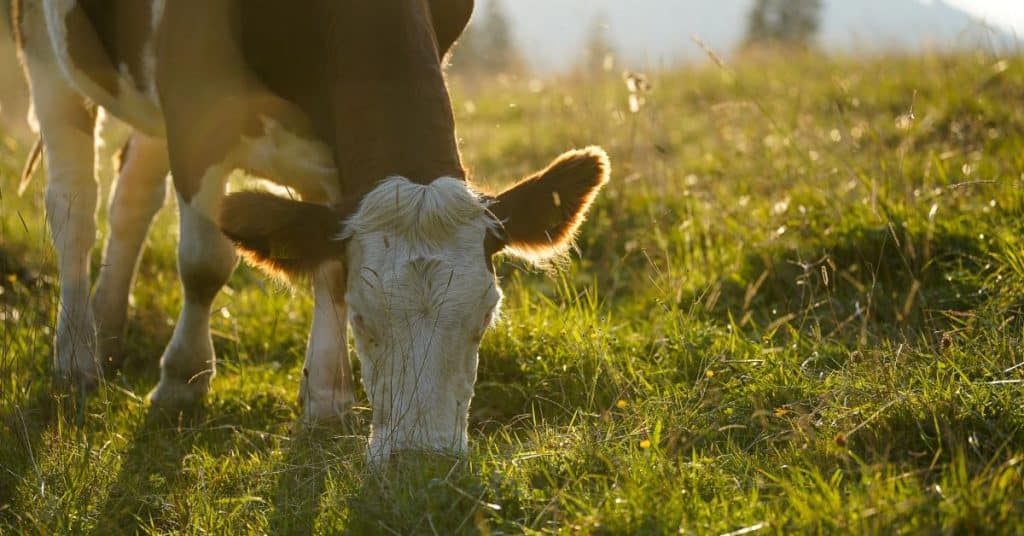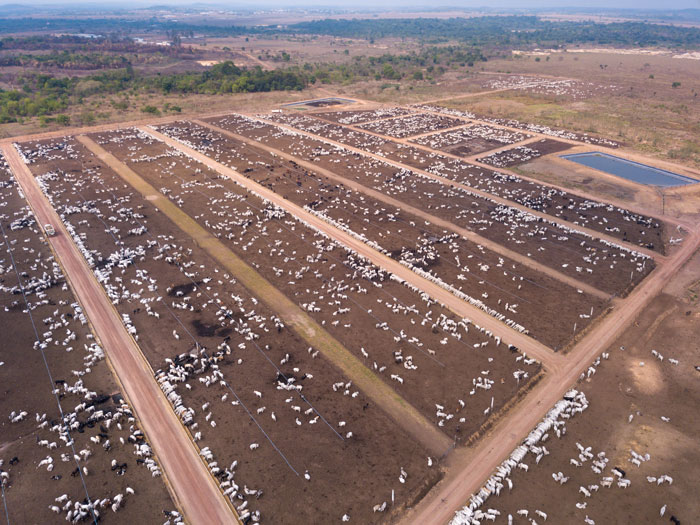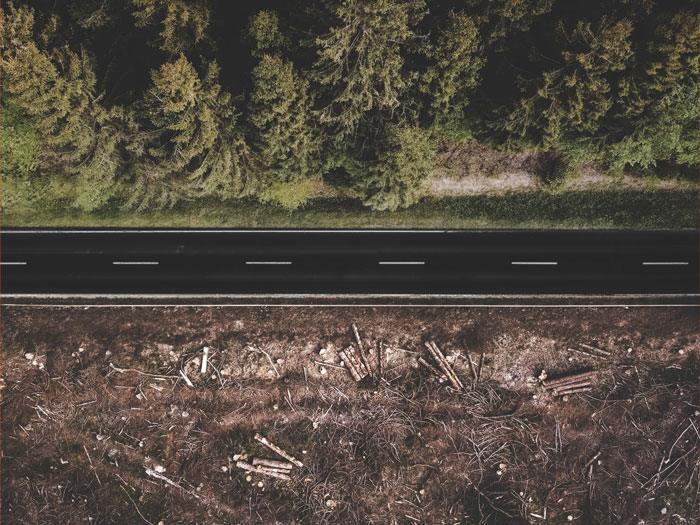

Regenerative agriculture has gotten a lot of attention in recent years. While there is no single definition for this term that everyone can agree on, it usually refers to a collection of innovative farming practices that replenish the soil with nutrients, prevent soil erosion, sequester carbon from the air to reduce the effects of climate change, and more. The goal of these farming practices is to improve the health of the soil and protect natural resources while feeding the world’s growing population in a healthy, sustainable way.[1]
Many of the practices associated with regenerative agriculture produce measurably effective benefits for the environment and our food system. These practices include no-till farming, the reduction and elimination of chemical fertilizers (some of which have been shown to increase cancer risk), and cover cropping.[2][3][4]
However, not every method associated with regenerative agriculture is well received. One particularly controversial and perhaps contradictory principle is regenerative grazing.
Regenerative grazing is the practice of grazing animals like cattle on a limited, closely-monitored scale in order to better maintain soil quality. It sometimes but not always results in meat products being labeled as grass fed.
In contrast to regenerative grazing, when large livestock like cattle are left to graze on the same plot of land for an extended period of time, the vegetation is destroyed. The dirt patches left behind by that destruction span hundreds if not thousands of acres.
While concentrated animal feeding operations (CAFOs) are sometimes found on land that is already dry and infertile due to its topographical region, such as the American Midwest, many CAFOs contribute to the deforestation of lush, biodiverse areas like the Amazon Rainforest.[5] This can happen either because the world’s growing demand for meat requires more space to store and raise cattle or because this demand requires more land to grow corn and soy for livestock feed. CAFOs can house hundreds to millions of animals and span hundreds of hectares (football field–sized plots) of land.[6]
Regenerative grazing offers an alternative to CAFOs: farmers aim to rotate a limited number of livestock animals between pastures, and they do so frequently enough that vegetation can be maintained. This allows carbon to be sequestered from the air while also raising livestock for meat or dairy.

Ecologically, regenerative grazing is an improvement from industrial factory farms.
According to a peer-reviewed life cycle assessment (LCA) in the journal Frontiers in Sustainable Food Systems, regenerative grazing can sequester carbon from the air.[7] The LCA states, “Multi-species pasture rotations sequester enough carbon in soil to create a greenhouse gas footprint that is 66 percent lower than conventional, commodity production of beef.”
According to another study, regenerative grazing can also improve soil health.[8] This, in turn, can result in healthier plant food for us to eat.[9]
However, regenerative grazing has drawbacks, some of which are unavoidable when raising animals for meat or dairy products.
Numerous concerns accompany the regenerative grazing approach. They include concerns about land use and deforestation, the relative efficacy of carbon sequestration, the relative effects on soil health, and the depletion of freshwater resources.
Although the LCA cited above claims that regenerative grazing can help sequester carbon from the atmosphere, there is a catch: according to the same assessment, producing a carbon-neutral or carbon-positive effect requires 2.5 times more grazing land than standard animal agriculture.[10]
This is not only unrealistic—it is impossible. More than 50 percent of the planet’s ice-free land is already being used for livestock grazing and for livestock feed production.[11] Even if we continue to use conventional agricultural methods, much less methods requiring more than twice as much land, there will be little to no arable land left if we want to continue producing animal-based foods for the expected population of 9.7 billion in 2050.[12] However, we would have the cropland needed to feed that growing population if the 40 percent of all crops produced today for feeding animals were instead used for direct human consumption.[11]
Another option for increasing arable land is deforestation, but the detrimental effects of this are huge. Forested lands are our most potent resources for sequestering carbon from the atmosphere; rather than clear cutting them, we should be protecting them.[13] Cutting them down to provide flat grazable land for cattle and other livestock is not logical, natural, or sustainable.
Similarly, areas that have been deforested or have housed livestock for long periods of time have considerably depleted soil health.[14] When hooved animals like cattle tromp on grassy lands and the vegetation dies, the soil beneath becomes vulnerable to accelerated rates of compaction and erosion. Such infertile, arid soil is unable to produce vegetation, including crops that could feed people.
Erosion and compaction render the soil incapable of holding rainfall and groundwater, leading to increased flooding. Furthermore, increased erosion disturbs local waterways. As soil clogs rivers and streams, the populations of fish and other aquatic wildlife are threatened.
In theory, regenerative grazing might lessen these negative impacts, but in practice, the growing demand for meat and dairy products undermines the feasibility of small-scale grazing. In other words, in order to meet the global demand, small-scale grazing cannot remain at that small scale.
Lastly, regenerative grazing remains an inefficient use of other resources, such as fresh water. Dairy cows, for instance, consume 30–50 gallons of water every day during lactating periods, and that water intake can even increase due to heat stress.[15] There were about 1.5 billion cattle counted worldwide for meat and dairy in 2014, and fresh water is far from ample.[16] Additionally, this consumption figure does not account for the water needed to grow feed for cattle (such as corn and soy), which accounts for about 41 percent of all agricultural water use.[17]
There are far less wasteful alternatives. It requires over 20 times more water to raise 1 kilogram of beef compared to an equal amount of rice, grains, beans, fruit and vegetables.[18]

Is regenerative grazing and ecologically minded use of livestock better than industrial animal agriculture? Yes—it appears so. However, that may be irrelevant. The real question is whether regenerative grazing is sustainable and scalable given the world’s current and growing demand for meat and dairy. And the answer is no.
Although regenerative grazing may benefit soil health, its ability to produce measurable, effective, and truly sustainable benefits in carbon sequestration is debatable. Estimations vary depending on what type of life cycle analysis is done.[19] And while regenerative grazing might yield positive results on a small scale, it continues the inefficient, unsustainable cycle of feeding plants to animals in order to feed those animals to people.
The more sustainable and realistic solution to curb climate change via our food system is to switch to a plant-based diet, and that’s not even to mention the health benefits of doing so![20]
Copyright 2025 Center for Nutrition Studies. All rights reserved.